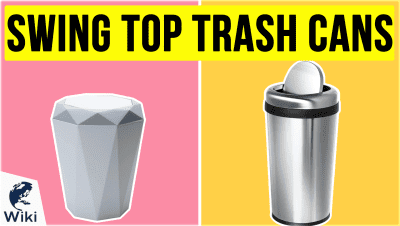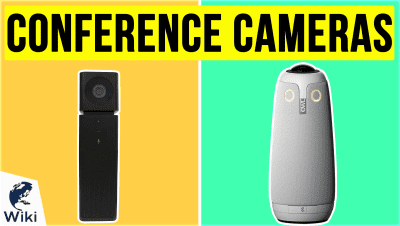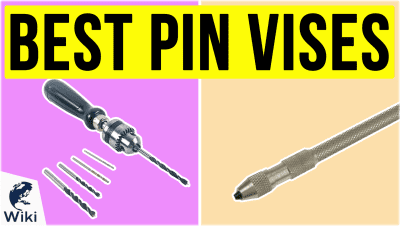How To Use Ezvid Composite
Advanced users of Ezvid Wikimaker can now take advantage of Ezvid Composite, video compositing software for Windows, currently in a limited beta release, that connects to Wikimaker and allows you to create compositions featuring layers of video and still images, complete with borders and effects. For those who want to take their creations to the next level, this guide will help you learn the basics of Composite. If you're just getting started with Wikimaker, try watching this guide, and check out our tutorial for Wikimaker Capture, which is great for making screen recordings. This video was made with Ezvid Wikimaker.
How Do I Install Ezvid Composite?
- Request access to the installer by contacting Ezvid Wiki.
- When the file has finished downloading, click the bar at the bottom of your browser to run the installer.
- When it's finished installing, open Ezvid Composite by double-clicking on the desktop icon.
- Select "Turn Wikimaker On"
- Log in with your Wikimaker user name and password
- Choose a wiki and get started
What New Features Are Available With Ezvid Composite?
You'll still be able to link images to text and take advantage of the free narration and music supplied by Wikimaker, as well as the fair use images in Ezvid's library. You can also still take screenshots, make screen recordings, and draw on them with Wikimaker Capture. Composite is for users who have mastered those and want to do more. Here are just a few of the things you can do with Composite:
- Create layered images
- Add borders
- Adjust in and out times
- Blur backgrounds
- Add intro and outro FX
- Scale, crop, and resize media
- Change border color and thickness
- Preview compositions with narration before rendering
- Save compositions to reuse them
- Watch back video from specific words
- Take snapshots of compositions
- Add files from the web using the URL
- Drag and drop images and videos into your media library
- Easily add and delete files from media, composition, snapshot, and render libraries
- Simple keyboard shortcuts
When Should You Use Ezvid Composite Instead of Wikimaker Capture?
| Feature | Wikimaker Capture | Ezvid Composite |
|---|---|---|
| Connects to Ezvid Wikimaker | ||
| Take screenshots | ||
| Make screen recordings | ||
| Combine images into layers | ||
| Add borders | ||
| Adjust in and out times | ||
| Utilize intro and outro FX |
Helpful Links
- contact Ezvid Wiki to request the beta Composite installer
- Ezvid Wikimaker
- How To Use Ezvid Wikimaker
- How To Use Wikimaker Capture
- Ezvid Wikimaker Style Guide
- Style Guide Video Part One
- Style Guide Video Part Two
- Style Guide Video Part Three
- Articles Made With Wikimaker
In Depth
This is an instructional guide for how to use Ezvid Composite to enhance videos made with Ezvid Wikimaker. Hopefully by now, you've created a username and checked out the Wikimaker interface, which allows you to take advantage of voice synthesis to connect supplied images with your written narration. Wikimaker is the quickest and easiest way to make videos online, and Composite lets you take your content to the next level.
By clicking "Help" you can view a full guide to using Wikimaker. If you're using Composite, you'll still be adding text to your wikis in the same way, by typing each paragraph and letting voice synthesis take place. On the "Capture" page, you'll also see links to tutorials for both versions of the Capture program. Capture for Chrome is still useful for capturing images and videos from the web, and the Desktop version allows you to record your entire computer screen. You can always add recordings and captures to Wikimaker and link them to the text as outlined in those guides.
What makes Composite different is the ability to incorporate layers to build multi-faceted compositions, allowing you to better convey information to your audience with features like borders and effects, without having to spend ages editing. Once you've downloaded Composite, click on the icon to open the program. You'll see a lot of menu options at the top. Click on the one that says "Turn Wikimaker On."
You'll see a lot of menu options at the top.
Once you log in with your Wikimaker information, Composite will now be linked to your Wikimaker account. Go to "My Wikis" and select the first section. This top window now shows the first paragraph, complete with automatically-supplied images. You can watch back this section to see how you like the images supplied. Clicking the arrow next to a particular word plays back the video from that word, and you can also play back just a three-second clip.
Some of the images may go by too fast, or don't properly express the ideas in your writing. To remove them, hover over the connected word and select the trash icon. The video will re-render without those images included. you can move an image to a different word by simply dragging it to where you want it.
You'll find there are spaces in your work where you want to add visual content. Now it's time to create your first composition. To determine where in the video this composition will be shown, click a word. When that word is spoken in narration, our new composition will appear on screen. You'll see on the bottom of the screen that you're now working on this section of text.
You'll find there are spaces in your work where you want to add visual content.
Minimize the Wikimaker window and look at the top of the screen. You'll see "Media" as the option on the left. Click on it to view the Media screen. This is where you can add images and videos to create your first composition.
Ezvid's library of fair use images and videos can be searched from this screen. Type in a key word to find related clips. When you find one you like, click on it, and it will be added to your media library. You can also add files from your computer by dragging and dropping them in the dotted rectangle.
If you've found an image from the web that you'd like to use, simply paste the URL into the box and click "Submit." That image will then be added to your library as well. It's also possible to take a screenshot so you can use images of things like maps found online. When you take a screenshot, you can crop it in any way you like, then click "Make media source" when you're done.
It's also possible to take a screenshot so you can use images of things like maps found online.
To make your composition, select a piece of media from your library. It's easiest if you choose the background first. Click "New Composition and Layer," and it will be added to the composition. Select the other media you wish to use and click "New Layer" to add it as well. Once everything is there, click on "Composition Editor" to move to the next screen.
In the Composition Editor, you'll see blue bars at the bottom representing each layer, and the completed composition at the top. To change which image is on top, click the arrows. You can click the blue bar to select an image for editing. You can crop the image to make it smaller using the scale on the right if you only want to use part of the image. It's also possible to change the size or position of the image using your mouse. If you decide you don't like the changes you've made, you can reset the scale or position and start over.
After settling on a size and position, you can add a border. Click the box to turn it on. You'll see that you can select the size of the border and make adjustments, as well as choose between a lot of different colors. After you've made those decisions, click the arrow to watch back what you have so far. If you're satisfied, click "Duplicate and Render." Back at the Wikimaker window, you'll see that it has been added to your video. If you want to make further changes, you can find this composition on the "Compositions" screen.
After settling on a size and position, you can add a border.
You may have simple compositions that are only still images, no video. These can be livened up by clicking "Drawing On," which allows you to add arrows and other helpful indicators. If your composition is only still images, you can click "Export Screenshot" to add it to Wikimaker without video. Just make sure to select the correct word first so it goes in the correct spot.
You've now added simple compositions featuring two layers, but Composite also has effects so you can incorporate more images and layers. When you have three or more layers, it's possible to change when they appear using in and out times. You can right click on the blue bar to determine when each image will appear on screen and watch back to decide on the right moment for each one to appear so it matches with the associated word.
If you don't want the background to be distracting, it's possible to add a blur effect to it and adjust the level. You can also add borders to each layer as before. But you don't have to settle for images that flash onto the screen quickly. There are intro effects that determine how each layer will appear. Adjusting the timing, effects, blur, and appearance allows users to create seamless transitions between layered images that are attractive to the eye.
There are intro effects that determine how each layer will appear.
Once you've added all your compositions to Wikimaker, it's time to watch back what you've made. This is just one paragraph, and each video wiki can incorporate multiple sections. You see the variety of things Composite is able to create, and with so many features, you're really only limited by your imagination. You can construct informative and entertaining videos quickly and easily, and create something truly original.




















